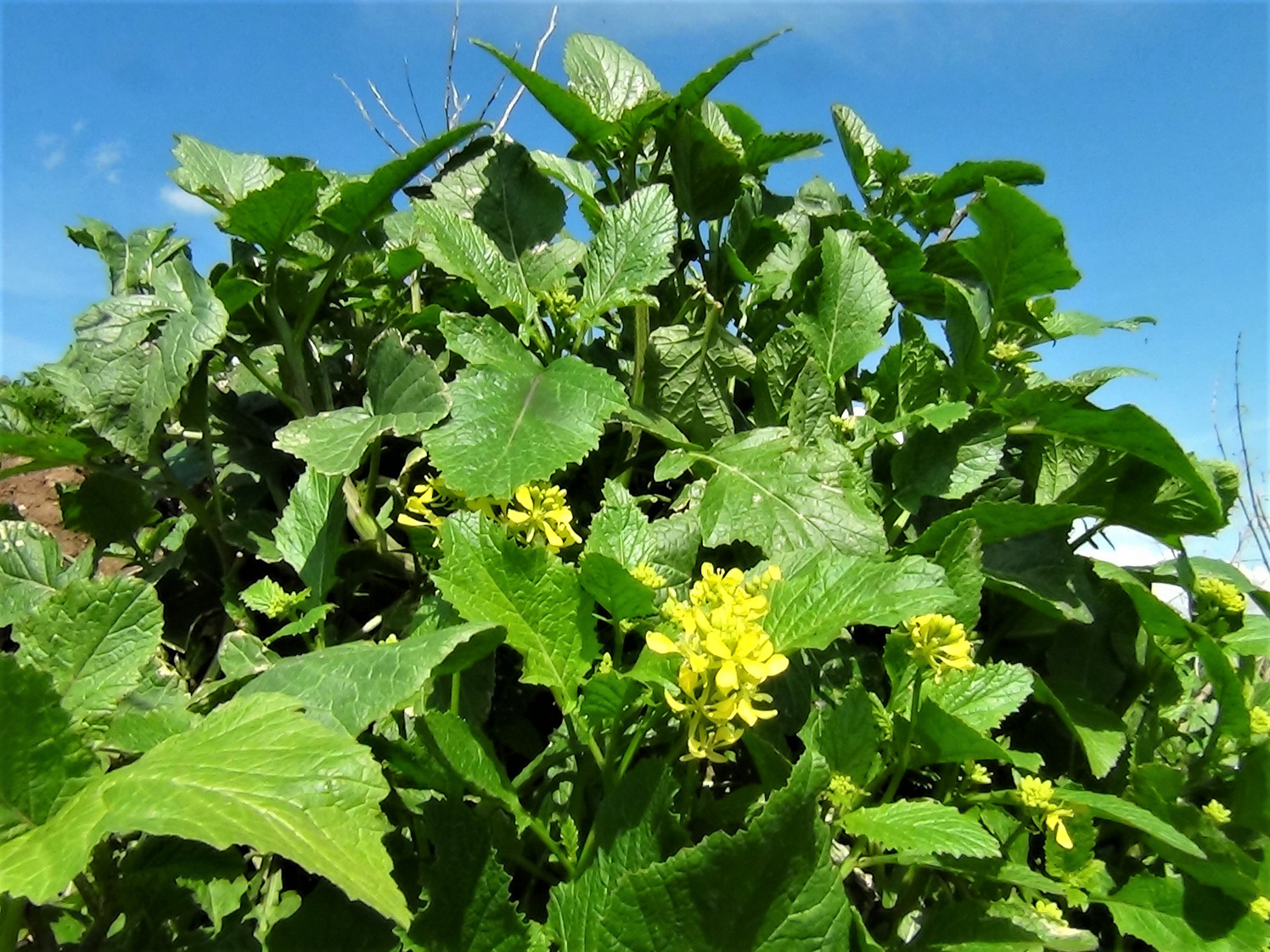Discovering the Diverse World of Brassicas
The mustard family, also known as Brassicas, is a fascinating group of plants that have been a cornerstone of human civilization for centuries. As a member of the mustard family, these plants have played a vital role in cooking, nutrition, and agriculture. Characterized by their distinctive flowers and seeds, Brassicas have been a staple in many cuisines around the world. From the spicy kick of mustard to the nutritional punch of broccoli, these plants have been a valuable resource for humans. The unique characteristics of Brassicas, including their four-petaled flowers and seed pods, set them apart from other plant families. This family of plants is incredibly diverse, with over 3,000 species spread across the globe. In this article, we will delve into the world of Brassicas, exploring their importance, characteristics, and uses.
What Makes a Plant a Member of the Mustard Family?
A plant is considered a member of the mustard family if it exhibits certain distinct botanical characteristics. One of the most notable features of Brassicas is their cruciferous flowers, which are typically arranged in a cross-like pattern. These flowers are often small and white, yellow, or purple in color. Another key characteristic of mustard family plants is their seed pods, which are typically long and slender, containing multiple seeds. The leaf structures of Brassicas are also unique, often featuring a rosette pattern with lobed or toothed edges. Examples of common plants that belong to this family include broccoli, cauliflower, kale, and mustard. These plants are all members of the mustard family due to their shared characteristics, which set them apart from other plant families. By understanding these botanical features, it’s possible to identify and appreciate the diversity of plants within the mustard family.
How to Identify Mustard Family Plants in the Wild
Identifying mustard family plants in their natural habitats requires a combination of knowledge and observation skills. To accurately identify a plant as a member of the mustard family, it’s essential to recognize their growth habits, leaf shapes, and flower colors. Mustard family plants often grow in a variety of environments, from fields and meadows to forests and wetlands. They can range in size from small, delicate plants to tall, robust ones. When identifying these plants, look for characteristic leaf shapes, such as the lobed or toothed edges found in plants like kale and mustard. Flower colors can also be a distinguishing feature, with many mustard family plants producing yellow, white, or purple blooms. Accurate identification is crucial for foraging and conservation purposes, as some plants may be mistaken for others with similar appearances. By developing a keen eye for the unique characteristics of mustard family plants, enthusiasts can appreciate the diversity of these valuable species and contribute to their preservation.
The Culinary Delights of the Mustard Family
The mustard family, comprising a diverse range of plants, has been a staple in various cuisines around the world. From the spicy kick of mustard seeds in Indian and Southeast Asian dishes to the nutritious crunch of broccoli and kale in Western salads, these plants have been a culinary delight for centuries. As a member of the mustard family, plants like cabbage, cauliflower, and Brussels sprouts are essential ingredients in traditional European cooking, while bok choy and Chinese broccoli are staples in Asian cuisine. The versatility of these plants lies in their ability to be consumed raw, cooked, pickled, or fermented, making them a valuable addition to any meal. Moreover, mustard family plants are rich in vitamins, minerals, and antioxidants, providing numerous health benefits when consumed as part of a balanced diet. The high vitamin C content in plants like kale and cauliflower, for instance, makes them an excellent choice for boosting immunity and fighting off diseases. By exploring the diverse culinary uses of mustard family plants, cooks and food enthusiasts can unlock a world of flavors and nutritional benefits.
The Medicinal Properties of Mustard Family Plants
Mustard family plants have been utilized for centuries in traditional herbal medicine, and their medicinal properties continue to be explored and appreciated today. As a member of the mustard family, plants like broccoli, cauliflower, and kale possess anti-inflammatory properties, which have been shown to reduce the risk of chronic diseases such as heart disease and cancer. The antioxidant properties of these plants also help to protect cells from damage caused by free radicals, promoting overall health and well-being. Furthermore, the antibacterial properties of mustard family plants have been used to treat a range of ailments, from respiratory infections to skin conditions. In traditional Chinese medicine, for example, mustard seeds are used to treat digestive issues and reduce inflammation. Similarly, in Ayurvedic medicine, mustard oil is used to treat skin conditions and promote wound healing. Modern research has also highlighted the potential of mustard family plants in treating modern health issues, such as diabetes and neurodegenerative diseases. By exploring the medicinal properties of mustard family plants, researchers and healthcare practitioners can unlock new possibilities for natural and effective treatments.
Growing Your Own Mustard Family Plants
As a member of the mustard family, plants like broccoli, kale, and cauliflower are relatively easy to grow in home gardens, making them an excellent choice for gardeners of all skill levels. To get started, choose a location with full sun and well-draining soil, as most mustard family plants prefer these conditions. Prepare the soil by adding organic matter such as compost or manure, which will help to improve its fertility and structure. Sow seeds in early spring or late summer, depending on the specific variety, and thin them out to about 12-18 inches apart as they grow. Water regularly, but avoid overwatering, which can lead to root rot and other diseases. Keep an eye out for pests like aphids, slugs, and snails, and use organic pest control methods whenever possible. By following these simple tips, gardeners can enjoy a bountiful harvest of delicious and nutritious mustard family plants. In addition to providing a fresh supply of vegetables, growing mustard family plants can also attract pollinators like bees and butterflies, improve soil health, and add beauty and diversity to the garden. Whether you’re a seasoned gardener or just starting out, growing your own mustard family plants is a rewarding and enjoyable experience that’s sure to bring years of pleasure and benefit.
The Cultural Significance of Mustard Family Plants
As a member of the mustard family, plants like broccoli, cauliflower, and kale have played significant roles in various cultures and traditions around the world. In many Asian cultures, mustard family plants are considered symbols of good fortune and prosperity, and are often served at special occasions like weddings and New Year’s celebrations. In European folklore, mustard family plants are associated with protection and purification, and are sometimes used in rituals to ward off evil spirits. In art, mustard family plants have been depicted in various forms, from intricate botanical illustrations to vibrant still-life paintings. The cultural significance of mustard family plants extends beyond their culinary and medicinal uses, and highlights their importance as a symbol, metaphor, and motif across different cultures. For example, in some African cultures, mustard family plants are used in traditional ceremonies to promote fertility and abundance. In Hindu mythology, the mustard plant is associated with the goddess Lakshmi, who is revered as the embodiment of beauty, prosperity, and good fortune. By exploring the cultural significance of mustard family plants, we can gain a deeper appreciation for the diverse ways in which these plants have been valued and utilized throughout history.
Conservation Efforts for Mustard Family Plants
As a member of the mustard family, plants like broccoli, cauliflower, and kale are not only valuable for their culinary and medicinal uses, but also play a crucial role in maintaining ecosystem balance and biodiversity. However, many mustard family plants are facing threats to their survival, including habitat destruction, climate change, and over-harvesting. It is essential to conserve these valuable plant species and their habitats to ensure their continued availability for future generations. Conservation efforts, such as the creation of protected areas and the development of sustainable agriculture practices, are underway to protect mustard family plants and their habitats. Additionally, initiatives aimed at promoting the sustainable use of mustard family plants, such as reducing waste and promoting efficient harvesting practices, are also crucial in ensuring the long-term conservation of these plants. Furthermore, education and awareness campaigns can help to raise awareness about the importance of conserving mustard family plants and their habitats, and encourage individuals to take action to protect these valuable resources. By supporting conservation efforts and making conscious choices in our daily lives, we can help to ensure the continued availability of mustard family plants and their many benefits for generations to come.








